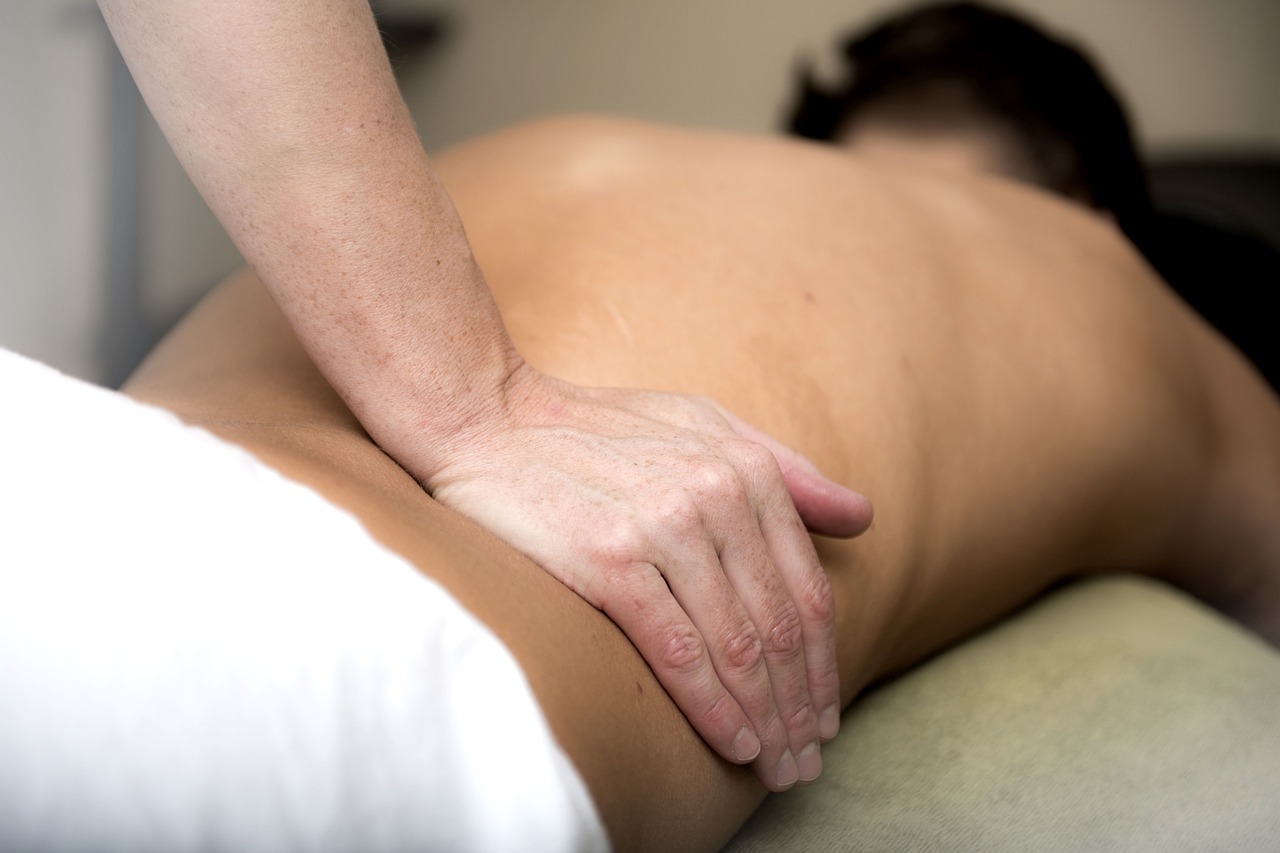Effective Physical Therapy Treatments for Lumbar Spinal Stenosis and Lower Back Pain
Understanding Spinal Stenosis and Physical Therapy
Spinal stenosis is a condition that can cause severe pain and discomfort for individuals. It occurs when the spaces within the spine narrow, putting pressure on the nerves and spinal cord. This can lead to symptoms such as neck or low back pain, numbness, and weakness in the legs. In severe cases of spinal stenosis, there is significant pressure on the spinal nerves during walking, and this greatly effects an individual's physical function.
Treatment of cervical and lumbar stenosis can vary. In the most severe cases, surgery may be needed. However, as an effort to avoid surgery, less invasive treatments such as spinal injections and physical therapy are performed first. Fortunately, physical therapy offers the most non-invasive approach to managing spinal stenosis.
By working with a qualified physical therapist, individuals can receive targeted exercises and techniques to alleviate their symptoms and restore their quality of life. Physical therapy for spinal stenosis focuses on improving flexibility, strengthening core muscles, and enhancing range of motion. With the help of physical therapy, individuals can find relief from their spinal stenosis symptoms without resorting to invasive treatments.
Exploring Spinal Stenosis: Causes, Symptoms, and Impact
Understanding Spinal Stenosis
Spinal stenosis is a condition characterized by the narrowing of the spaces within the cervical or lumbar spine. This narrowing can occur in different areas, and cause compression of the spinal cord and nerves. The most common cause of spinal stenosis is age-related degeneration of the spine, which leads to the thickening of ligaments and the formation of bone spurs. Other causes include herniated discs, tumors, and spinal injuries.
"Lumbar stenosis can become severe and disabling when it goes untreated. Imagine standing up, and shortly afterwards, your legs become weak, or numb. Most individuals with lumbar stenosis lose their ability to walk. Imagine not being able to go to your favorite store and restaurants, or not visiting your family or friends. Then consider the consequences of not walking like you used to. Your cardiovascular system, leg strength, and balance will go in a downward spiral."
Can Physical Therapy Help With Spinal Stenosis?
Physical therapy is known to be an effective conservative treatment in helping individuals with spinal stenosis. One literature review showed that manual physical therapy can improve disability, symptoms, and function in patients with lumbar spinal stenosis. Results of this study found that these improvements lasted for up to 18 months.
One advantage of physical therapy is that it avoids the potential risks associated with invasive treatments or medications. This makes it a favorable option for those seeking nonsurgical management of spinal stenosis.
Causes and Risk Factors of Spinal Stenosis
Several factors can contribute to the development of spinal stenosis. Age is a significant risk factor, as wear and tear on the spine over time can lead to degenerative changes. Other risk factors include previous spinal injuries or surgeries, genetic predisposition, and certain medical conditions such as arthritis. Additionally, engaging in activities that put repetitive stress on the spine, like heavy lifting or sports with frequent impact, can increase the likelihood of developing spinal stenosis.
Symptoms of Spinal Stenosis and Impact on Daily Life
The symptoms of spinal stenosis usually can vary, depending on the location and severity of the condition. Common symptoms include back and leg pain or cramping, numbness or tingling sensations in the extremities, weakness in muscles, and difficulty walking or maintaining balance. These symptoms can significantly impact an individual's daily life by limiting their mobility and causing discomfort during routine activities such as walking or standing for prolonged periods.
How Can Physical Therapists Help Manage Spinal Stenosis?
Benefits of Physical Therapy for Spinal Stenosis
Physical therapy program offers a non-invasive and effective approach to managing spinal stenosis. Your physical therapist with design a program to reduce pressure on the spinal nerves and help alleviate pain. Physical therapists work to improve your overall function and mobility of the spine. Here are some key benefits of physical therapy for individuals with spinal stenosis:
Non-invasive approach: Unlike surgical interventions, physical therapy does not involve any invasive procedures or medications. It aims to address the root causes of spinal stenosis through targeted exercises and techniques.
"Surgical options are usually a last resort because they aren’t always effective. That’s where our role as physical therapists come in. We’ll evaluate you to find ways reduce the impingement on the nerves. Every case is slightly different. If we can find some exercises to reduce your symptoms, you’ll be able to manage the stenosis and live your life more freely. "
-Dr. Christopher Wong, PT, DPT, CSCS, USA-W
Improving flexibility and range of motion: Physical therapists can design personalized exercise programs that target specific areas affected by spinal stenosis. These exercises focus on stretching tight muscles, increasing joint mobility, and improving overall flexibility.
Strengthening core muscles to support the spine: Weak core muscles can contribute to poor posture and increased stress on the spine. Physical therapy includes exercises that target the core muscles, such as the abdominals and back muscles, helping to stabilize the spine and reduce pain.
By incorporating physical therapy into their treatment plan, individuals with spinal stenosis can experience improved functionality, reduced pain levels, and enhanced quality of life.
Effective Exercises and Techniques for Spinal Stenosis Relief
Exercises for Spinal Stenosis Relief
Physical therapy offers a combination of exercises and activities specifically designed to provide pain relief from spinal stenosis symptoms. These exercises target different areas of the body and aim to reduce pressure on the spine, improve flexibility, strengthen muscles, and promote overall fitness.
Stretching exercises to improve flexibility: Gentle stretching can help alleviate muscle tightness and improve range of motion. Physical therapists may recommend specific stretches that target the back, hips, and legs to relieve tension in the affected areas.
Strengthening exercises for core and back muscles: Strengthening the core muscles is crucial for providing support to the spine. Physical therapists often prescribe exercises that target the abdominal muscles, back extensors, and glutes to enhance stability and reduce pain.
Low-impact aerobic exercises for overall fitness: Engaging in low-impact activities such as walking, swimming, or cycling can help maintain cardiovascular health without putting excessive strain on the spine. These exercises promote overall fitness while minimizing stress on the joints.
Techniques for Spinal Stenosis Relief
In addition to exercises, physical therapy incorporates various techniques that can provide relief from spinal stenosis symptoms:
Manual therapy to alleviate pain and improve mobility: Physical therapists may use hands-on techniques such as joint mobilization or soft tissue manipulation to relieve pressure on the nerves, reduce pain, increase joint mobility, and restore proper alignment.
Posture correction techniques for spinal alignment: Poor posture can exacerbate spinal stenosis symptoms. Physical therapists educate individuals on proper posture techniques and provide guidance on maintaining correct alignment during daily activities.
Education on body mechanics to prevent further damage: Learning proper body mechanics is essential for individuals with spinal stenosis to avoid activities or movements that may worsen their condition. Physical therapists educate patients on safe lifting techniques, body mechanics during sitting or standing, and strategies to protect the spine.
By incorporating these exercises and techniques into their routine, individuals with spinal stenosis can experience relief from pain, improved mobility, and enhanced overall well-being.
Choosing the Right Physical Therapist for Spinal Stenosis Management
Qualities to Look for in a Physical Therapist
When seeking a physical therapist for spinal stenosis management, it's important to find someone who possesses certain qualities. Here are some key qualities to look for:
Experience and expertise in treating spinal stenosis: Choose a physical therapist who has specific experience and knowledge in treating spinal stenosis. They should be familiar with the condition, its symptoms, and effective treatment approaches.
"One of the first things we do is evaluate the mobility in your spine and hips. Most of the time, we can find a pattern or motion that reduces those symptoms down your legs. We like to call that the 'off switch.' Finding that 'off switch' is key, because it can guide us which exercises to give you, or which manual techniques to perform. "
-Dr. Christopher Wong, PT, DPT, CSCS, USA-W
Good communication and listening skills: Effective communication is essential in the therapeutic relationship. A skilled physical therapist should actively listen to your concerns, answer your questions, and explain treatment plans clearly.
Ability to create personalized treatment plans: Each individual with spinal stenosis is unique, so it's crucial to find a physical therapist who can develop personalized treatment plans tailored to your specific needs and goals.
Finding a Qualified Physical Therapist
Finding a qualified physical therapist for spinal stenosis management involves several steps:
Seeking recommendations from healthcare professionals: Consult with your primary care physician or orthopedic specialist for recommendations on reputable physical therapists specializing in spinal stenosis.
Researching credentials and certifications: Look for physical therapists who have advanced certifications or specialized training in treating spinal conditions like stenosis. Check their credentials and ensure they are licensed by the appropriate governing body.
Scheduling a consultation to assess compatibility: Arrange an initial consultation with potential physical therapists to discuss your condition, treatment options, and assess if you feel comfortable working with them.
If you're looking for a reputable physical therapist in New York City that specializes in spinal stenosis management, try Caliber PT. We understand the challenges that come with spinal stenosis and are dedicated to providing personalized care tailored to your specific needs.
Our team of qualified therapists is experienced in managing spinal conditions, and we strive to create a supportive environment for our patients.
Find Relief for Spinal Stenosis with Expert Care at Caliber PT
Experience personalized treatment and regain your mobility in New York City's premier physical therapy center.
Embracing a Pain-Free Future: Physical Therapy for Spinal Stenosis
Caliber physical therapists will design individuals with spinal stenosis a non-invasive and effective approach to managing their condition. By incorporating specific exercises and techniques, individuals can find relief from symptoms such as pain, numbness, and limited mobility.
The personalized treatment plans provided by qualified physical therapists focus on improving flexibility, strengthening core muscles, and enhancing overall function. With the guidance of a skilled physical therapist, individuals can embrace a pain-free future and regain control over their daily lives.
If you're living with spinal stenosis, consider exploring the benefits of physical therapy to experience improved quality of life and long-term management of your condition.
References:
Lumbar Spinal Stenosis Assessment With Computed Tomography, ... : Clinical Orthopaedics and Related Research®. LWW. Published 2023. Accessed November 21, 2023. https://journals.lww.com/clinorthop/fulltext/2001/03000/lumbar_spinal_stenosis_assessment_with_computed.15.aspx
Therapeutic Exercise in the Treatment of Patients With... : Clinical Orthopaedics and Related Research®. LWW. Published 2023. Accessed November 21, 2023. https://journals.lww.com/clinorthop/fulltext/2001/03000/therapeutic_exercise_in_the_treatment_of_patients.17.aspx
Wang C, Chang H, Gao X, Xu J, Meng X. Risk factors of degenerative lumbar scoliosis in patients with lumbar spinal canal stenosis. Medicine. 2019;98(38):e17177-e17177. doi:https://doi.org/10.1097/md.0000000000017177
Whitman JM, Flynn TW, Fritz JM. Nonsurgical management of patients with lumbar spinal stenosis: a literature review and a case series of three patients managed with physical therapy. Physical Medicine and Rehabilitation Clinics of North America. 2003;14(1):77-101. doi:https://doi.org/10.1016/s1047-9651(02)00076-1
See Also
What to Expect in Your Initial Physical Therapy Session
Decoding the Contrasts and Advantages: Sports Physical Therapist vs Physical Therapist for Athletes
Enhancing Rehabilitation: Physical Therapy Before and After Orthopedic Surgery
Unraveling Post-Physical Therapy Soreness: A Comprehensive Guide
Unveiling the Mystery: Exacerbation of Nerve Pain Following Physical Therapy





